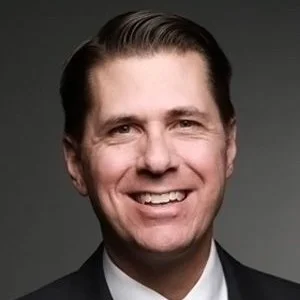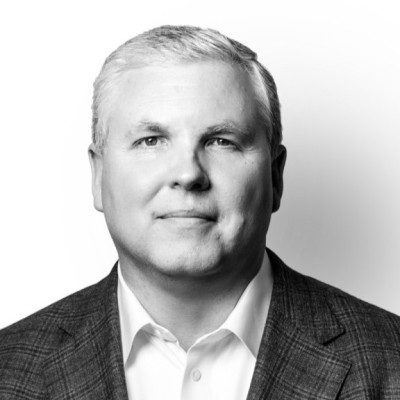Products You May Like
 Ask a dozen CHROs what their talent worries are in 2022 and 11 of them will likely put talent acquisition at the top of the list. Facing one of the most competitive labor markets the business community has seen in years of rapid change and smarting from the post-Covid Great Resignation, companies across all industries are struggling to find great people.
Ask a dozen CHROs what their talent worries are in 2022 and 11 of them will likely put talent acquisition at the top of the list. Facing one of the most competitive labor markets the business community has seen in years of rapid change and smarting from the post-Covid Great Resignation, companies across all industries are struggling to find great people.
But ask Verizon CHRO Samantha Hammock for her biggest talent challenge, and she gives a very different answer. Her main worry, she says, is managing career progression for high-potential employees who are eager to move into the next role but may not be ready yet. As far as finding the best talent to bring into the organization? “I actually feel pretty good about that,” she says.

That positivity is largely down to the fact that Verizon has what many companies lack: a formal strategic workforce plan that aligns talent strategy with overall business goals. That framework, which Hans Vestberg initiated when he took over as CEO in 2018 and which Hammock spent the first year setting up, allows her team to focus on building talent and skillsets internally rather than on vying for external hires. “When you do strategic workforce planning, you start fully with the business vision and mission and overall strategy,” she says. Now three years into a five-year strategy, which she notes has stayed consistent, Hammock is able to stay ahead of the company’s growth, plotting moves in advance of need and keeping the bench deep. The way she knows it’s working? “We do almost all of our growth completely from within.”
Verizon seems to be in the minority. Many companies were caught off guard by Covid, by the need to scale down and then back up quickly, and by the mass resignations during and after the pandemic’s peak. “There is a real scarcity of talent in the market, and a lot of companies have been scrambling over the past couple of years to get people on their team,” says Anish Batlaw, managing director at private equity firm General Atlantic.
Many companies, in fact, moved both by the tightening labor market and cheaper borrowing, went on hiring sprees in 2021, only to have to announce layoffs a few months later amid falling stock prices and higher interest rates. In May 2022 alone, 66 tech firms laid off a collective 16,800 people, according to tech job tracker Layoffs.fyi; that was the highest number of employees to get the axe in a single month since May 2020.
And the already significant fixed costs of adding staff are only getting steeper. This year’s 4.8 percent increase in average annual salary—the highest in decades—was even higher than companies had forecast in 2021, and almost a quarter of companies were planning midyear wage increases in addition to their annual hikes, with another 8 percent considering it, according to new research from Pearl Meyer.
Given all those factors, there is less and less margin for error when it comes to talent acquisition and retention. “When we get into a market that’s the most competitive we’ve seen for the longest period of time and with no end in sight, companies are going to go out of business not because they don’t have a successful product or service, but because they cannot figure this hiring thing out,” says David Lewis, CEO of HR consultancy OperationsInc. “They don’t seem to be paying close enough attention to how a lack of strategy and a lack of execution on this strategy is causing them to not be able to attract or retain people.”
Three ways that a lack of strategy is causing companies some big talent headaches:
1. They are hiring reactively. Companies that don’t have a solid strategy in place can easily wind up in a vicious circle of hiring to replace those who’ve left or to keep up with an unexpected surge in new business—and they then inadvertently cause future turnover by burning out existing staff while trying to fill the gaps, says Lewis. “You’re not looking to hire in a measured way that is part of a broader plan with a long runway.”

R. J. Heckman, vice chair of Korn Ferry, points out that companies often waste time and money on finding the “best” talent. “They think they need great talent in all areas, but they truly don’t,” he says. “It’s about being intentional, focusing on those most pivotal roles that will differentiate the business in its strategy, which should be very unique.” In other words, if you’re chasing great talent simply because your competitor is going after them, you’re wasting resources.
2. Decision-making is too slow. When a clear talent strategy is lacking, it’s often more challenging for leadership to come to a decision on skilled senior hires. Since those people are in high demand, they’re often snapped up by the time the call is made. Hammock says that one of the silver linings of the pandemic was that it forced companies to overcome perfectionism and learn how to reduce the bureaucracy that hampers decision-making. “As we’ve been coming out of it the last six to nine months, I find myself thinking, ‘Hey, can we get some of the Covid leadership back?’” she says. “We were making decisions so fast. The agility that was demonstrated, I loved that. Now, sometimes, I see some of the muscle memory going back to before.”

3. Not enough career carrots to dangle. If you don’t have a three-to-five-year plan, you can’t communicate to a prospective employee what his or her potential path might look like over the long term. “In a hot job market like this, an employer that’s really able to articulate what the job is today and what the job has potential to grow into tomorrow is really special sauce,” says Paaras Parker, CHRO at Paycor, a global leader in human capital management. “It also helps to create a compelling case for an employee or an individual who has multiple offers, and helps you fight burnout before it happens.”
To stop the cycle of hiring, firing and replacing, consider the following steps:
1. Spend the time up front. There is no way around this being a major time commitment for both the CHRO and the CEO—but as Parker notes, “you can either spend it strategically and intentionally on the front end, getting really crisp on what the outcomes are that you’re looking for, or you can do it in that middle gray area,” which is where companies often find that they’ve been fishing in the wrong pool or chasing the wrong skillsets.
Hammock talks to CEO Vestburg “constantly,” she says. “We probably trade notes every single day, multiple times—either calls or texts or in meetings.” Then they have more formal meetings a couple of times a week.

Jim Bailey, CEO of the Americas at Capgemini, estimates that he spends about 15 percent of his time on internal talent moves and another 25 percent on top of that on overall talent pool. Every other week, he meets with his talent acquisition team to review the pipeline and the dashboard of metrics on what the market demands are, what they’re searching for, how they are doing in terms of speed and agility of hiring and how it’s changing. And it doesn’t stop at the recruitment process, he says. “In the first three, six, 12, 24 months, how are those people onboarding? How are they integrating? How are they adapting to our environment, and what are the touchpoints that are going to make them successful in understanding the culture?”
Setting aside the time for talent strategy review makes it easier to make adjustments quickly when needed, says Datasite CHRO Deb LaMere, who sees strategy development as “a joint effort that I like to call ‘a customer care team for the business.’ You’ve got your business leader, your HR business partner, your recruiter and your finance person all kind of coming together to have a regular review of what the headcount is looking like, what the business is looking like, do we have to add to staff above the budgeted number? So when you have that baseline of the workforce plan, [you can see] where you might need to change or pivot based on what’s happening within the business or externally.”

Given that so many HR leaders are still transitioning from a more transactional role, CEOs may need to take extra time to be involved and to look for inefficiencies on the talent side, says Heckman. “They should bird-dog it as much as possible.”
2. Give HR a seat at many tables. If you haven’t already made the CHRO a C-Suite business partner, there is no time to waste. “That is the only way it can work,” says Horizon Therapeutics CHRO Irina Konstantinovsky, who notes that she is an “intricate part” of CEO Tim Walbert’s leadership team. “I don’t think Tim has a discussion about an acquisition, a new product, a change in our business landscape [without me]—he understands that any business decision he makes, other than maybe buying a molecule, has people implications, and he believes wholeheartedly that I am part of that equation. So, I spend a lot of my days and time in business-driven meetings because if we’re not completely plugged into the strategy of the company, this doesn’t work.” She also meets with Tim monthly to review the talent strategy they formally set up every June.
Verizon’s Hammock is also a regular at a host of business meetings, including the biweekly C-Suite meetings. “I am a key member of the steering committee of every single governance meeting we have, whether that is the M&A council, the product council, the strategy execution council, our business reviews, I am in every one of those meetings,” she says, adding that for business meetings lower down in the organization, members of her HR staff sit in. “It’s all a huge acknowledgment of how it’s changing—you can’t really effectively do HR anymore unless you understand the strategy objectives and agenda of the business.”
LaMere agrees that the change in human resources from transactional to strategy has been seismic. “It’s not even about a seat at the table—it’s about being the partner who is there to understand the needs of the business,” she says. “While I’m an HR person, I’m a businessperson first.”
At Capgemini, CHRO Anne Lebel is a full business partner like any other C-Suite member, but Bailey adds that “it’s a two-way street, in not just having the business inform HR of the strategy but also having HR inform the business on the realities of the recruiting market.”
3. Plan for the pivot. One of the things that catches companies flat-footed is that they fail to hire people with the flexibility to move into other roles when the company needs to switch gears. Batlaw, who leads General Atlantic’s human capital efforts for the firm’s portfolio of growth companies, says that nimbleness is essential to be “equipped to deal with not just the challenge that the company faces today, but the challenge that the company will face two years from now, three years from now.”

He encourages leaders of the firm’s portfolio companies to start building leadership bench strength right away. For example, Mike Pykosz, the CEO of Oak Street Health—which was a General Atlantic portfolio company before going public—brought in high-potential talent and put them in frontline roles so they could better understand the company’s services. “He invested in their development and managed their careers closely,” says Batlaw. “So when there was a need for more leaders, he had a whole crop of talent from within the company who could step into those bigger leadership roles.”
Bailey makes a point of hiring not for specific skillsets but “for a set of characteristics that allows the individual to pivot as the world evolves,” he says. “We need to move at speed to try to forecast demand and hire in a way that provides us the greatest agility.” The hallmarks of agility that Bailey looks for include being a fast learner and a critical thinker, having a bias for action and the cultural adaptability to work well in teams and with people of different backgrounds. “In the professional services industry, it’s all about reinvention,” he says.
Going through the process of creating and reevaluating talent strategy, whether over a one-year time period or a three-year or more, will “push the leaders you support to not just think about the problems of today but to anticipate some of those problems of tomorrow,” says Parker. “The talent strategy, much like the business strategy, should never be etched in concrete. There should be an expectation that even though you’re writing it firmly in sand, it’s going to change.”
For Hammock, having a framework allows her to more effectively manage the paths of 125,000 global employees and to deploy the “buy, build, lease” approach much more strategically. Now, Verizon hires only for skills the company doesn’t have at all currently but will need in the future; outsources those skills that are core to the company today but won’t be in the future; and Hammock spends the bulk of her time reskilling, upskilling and steering that increasingly skilled talent into different roles, where they will be challenged and less likely to quit.
“That informs the investments that we make in developing our existing workforce,” Hammock says, adding that the company is still early in the journey, about a year and a half in a formal way, but is already more prepared for the future and in a position to take the kind of risks necessary for growth. “We have this North star now,” she says. “Because of course things come up where you’re like, ‘We have to pivot on that, that’s not working’—and we wouldn’t be great if we weren’t taking some risks and trying and failing—but at the end of the day, it still has to link into the five vectors of our strategy. Having crystal-clear alignment on those at all times is really the key.”
